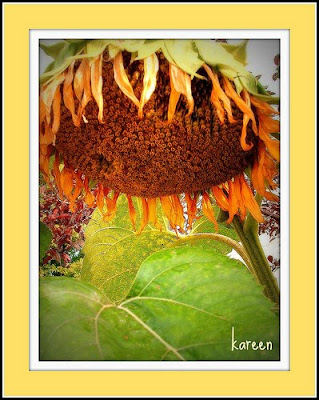The kernels were true to their name - peach and cream colored, plump and sweet. The corn was ready for harvest approximately 70 days after planting. The corn stalks were six feet high by the Fourth of July. In Ohio we have the saying, "Knee high by the Fourth of July"; which is the benchmark for corn to attain to be on target for summer harvest.
I did not double plant this variety - putting in two seeds per 4" - as I do for Silver Queen. It did not disappoint with a germination rate of near 100%. The seedlings emerged around the 8th day and grew better than expected.
I pulled the first of two 8 1/2" ears a day after my husband went to Florida. My husband lives for my sweet corn. He missed the first sweet pickings. It was truly unfortunate because this corn was THE best tasting bi-colored sweet corn I have ever tasted. The kernels were almost full set with two distinct crispy-sweet flavors.
He was gone for two weeks,
approximately the time this sugary enhancer hybrid
stays sweet and tender.
Tasting is believing. The homegrown corn he ate on day 14 tasted much like the supermarket corn that is trucked in from parts unknown. I can't convince him otherwise.
Since his disappointment, all the corn has since been harvested, blanched and frozen.
There's an amazing little Corn Pudding Recipe from the Frugal Gormet that uses fresh or frozen corn. I had it recently using my fresh-from-the-garden corn. Heavenly!
I'm hoping his disappointment in this year's bicolor will be forgotten when it returns in this dish:
1 3/4 cups milk
1 stick butter, melted
4 eggs, beaten
2 1/2 cups corn kernels
2 tablespoons sugar
1/2 tsp salt
1/2 tsp ground pepper
dash Tabasco
In a saucepan, heat the milk and gently melt the butter. Allow to cool. Beat the eggs. Chop the kernels a bit in a food processor or by hand. Keep the texture rough. (Frozen corn should be melted first in a colander.) Mix together all ingredients. Place in a buttered 2 qt. baking dish Bake at 325 degrees for 1 1/4 hours. The top should be lightly browned.
















